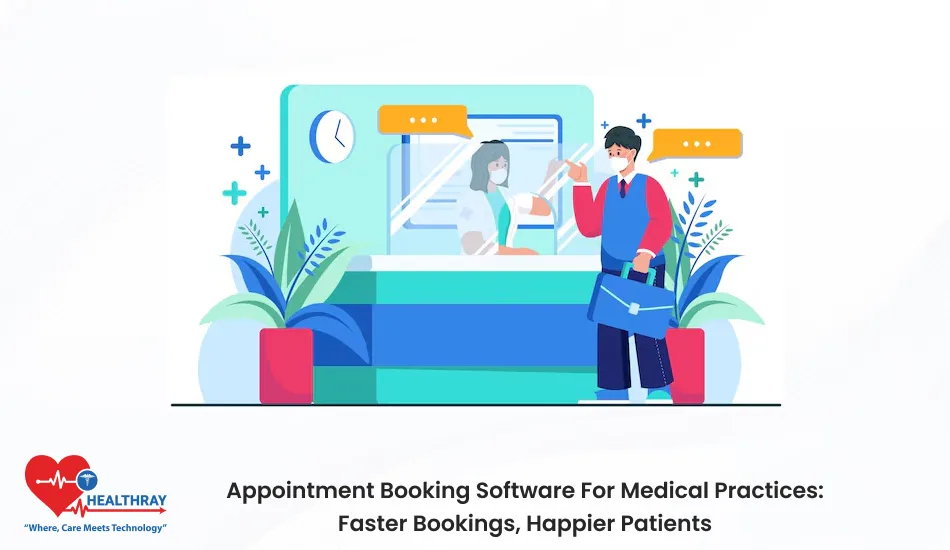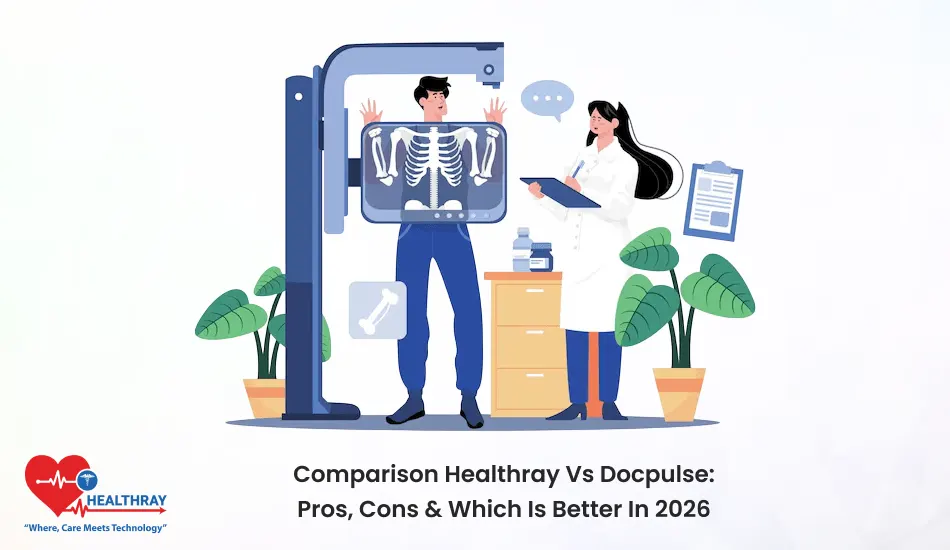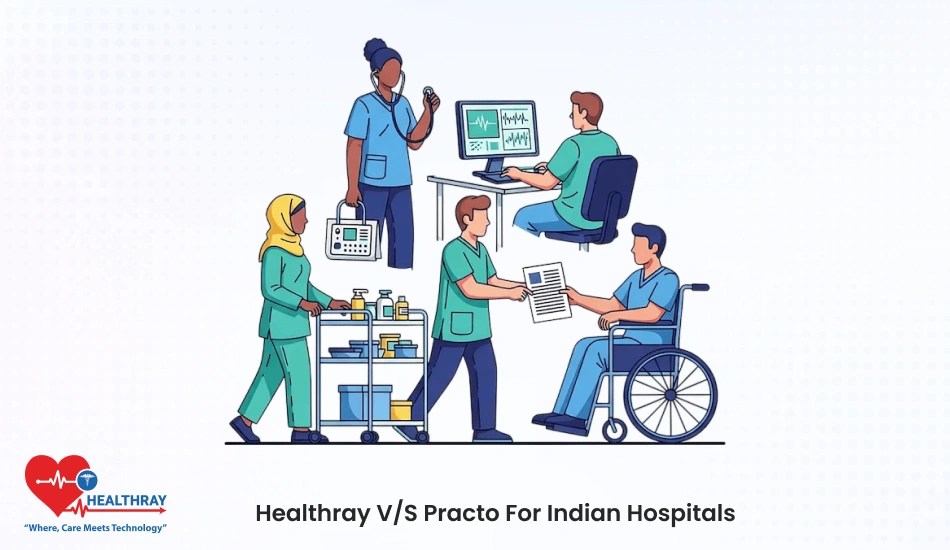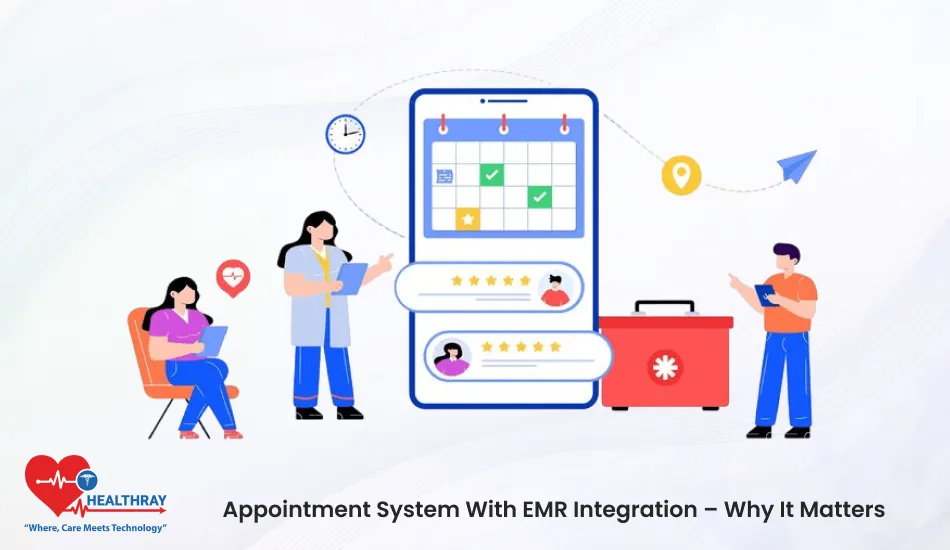Summary
As the healthcare world teeters on the verge of digital utopia, Hybrid EMR Deployment Models may, in fact, be the real game changer. They combine the tight security of an on-premise deployment with the speed of the cloud.
This blog post explores how these hybrid systems are redoing definitions of efficiency, securing data, and paving the way for the future of patient care. If you’re ready to see why balance is the new power in healthcare, this is your next read.
Introduction
In tech-driven hospitals today, no one wants to choose between cloud and on-premise. Why choose when you can have both? And that’s where Hybrid EMR Deployment Models excel!
They blend the power of control with the freedom of flexibility. With advanced EMR software, you can have the security of sensitive information stored locally, while still benefiting from instant access through the cloud. You also get speed, security, scalability all in perfect sync.
Moreover, hybrid systems ensure you’re prepared for anything growing patients and unexpected downtime. Even better, they help hospitals save time, money, and headaches. Ready to see how hybrid healthcare really changes care?
Let’s get started!
What are Hybrid EMR Deployment Models?

Evolution of EMR Systems
Not long ago, hospitals filled shelves with dusty reams of paper. Consequently, doctors paged through reams of paper to find details on each patient, and nurses had difficulty following treatments. Then, digital change came knocking on health care’s door.
In this context, EMR software came along and transformed the environment. Specifically, it digitized massive folders of patient histories, reports, and prescriptions. As a result, it now takes seconds, not hours, for doctors to pull records.
Initially, EMR medical solutions existed solely in hospitals. In particular, IT teams deployed them on local servers. Thus, hospitals owned all hardware and software. However, data remained in the building, safe but difficult to share. Consequently, this took a toll on cooperation. Moreover, remote physicians also had poor access to records, and upgrades were slow, taking months.
Then, the cloud rolled in. Notably, cloud-based EMRs promised accessible, anywhere work and automatic updates. Therefore, health data began to flow out of hospitals. For instance, doctors viewed reports from homes, and patients accessed results online. However, the cloud revolution caused fresh concerns. In particular, hospitals worried about data leaks, downtime on the internet, and compliance issues. As a result, security teams wanted to have control; meanwhile, doctors wanted flexibility.
The struggle for equilibrium between these two forces, therefore, led to one key insight: healthcare could be all about balance. Moreover, it needed a system that combined control, like on-premise servers, and speed, like the cloud. Consequently, that’s when hybrid EMR deployment models started to become a thing.
Rise of Hybrid EMR Deployment Model
When healthcare technology advanced, hospitals were left with an uncomfortable question of where their data should rightfully live. On one hand, total cloud migration was appealing but fraught with danger. On the other hand, full on-premise control was safe but felt constricted. Consequently, the industry began searching for compromise. Ultimately, this gave birth to the Hybrid EMR Deployment Models, which offered the best of both worlds.
Furthermore, these models grew alongside more intelligent EMR software and faster internet networks. As a result, hospitals discovered that the data could be parsed. For instance, they could store sensitive patient information on local servers. In the meantime, they could shift daily operations and backups to the cloud. Together, as a package, they represented the best of both worlds: flexible and controllable.
Before long, the major EMR medical solution companies began to provide these hybrid setups as standard options. Specifically, they included syncing records from their system with other systems. Additionally, they launched FHIR-based EMR integration to bridge healthcare apps with one another. As a consequence, doctors could finally exchange reports within departments without waiting days. This led to less idle time, more collaboration among workers, and happier patients.
It also solved one major headache: regulatory compliance. Hospitals would be compliant with privacy laws if they stored the protected health data on-site. Furthermore, at the same time, they were using the cloud for analytics, AI insights, and scale. Additionally, all data moves were tracked, with EMR audit trail & compliance tools. Consequently, hospitals remained transparent and trustworthy.
Moreover, hybrid systems eventually became the standard in digital hospitals. They not only sped up but also simplified disaster recovery. In fact, when servers crashed, they operated seamlessly out of the cloud. Ultimately, hybrid deployment touched not only systems but also people, processes, and possibilities.
Definition of Hybrid EMR Deployment Model
The Hybrid EMR Deployment Model is nothing but utilising both on-premises and cloud-based deployment together to maintain medical records. In essence, it’s like giving your EMR software two homes, one local and one online, and each covers what it does best.
Specifically, the sensitive information patient records, test results, compliance documents stays on local servers in the hospital. At the same time, the cloud does non-sensitive and high-volume tasks, such as calendaring, analytics, and report sharing. Thus, the two form a dynamic, safe environment for healthcare operations.
For instance, here’s a practical example: say XYZ Hospital has a large healthcare chain. In this case, its IT team loads the EMR software onto its own servers to protect patient identities and comply with local laws. Simultaneously, the hospital is linked to a secure cloud. Moreover, this platform also supports remote consultations, daily backups of data files, and is accessible by mobile phones for the doctors. Furthermore, FHIR-based EMR integration allows for seamless communication between the two systems. As a result, doctors can bring down data from the cloud without losing control of security.
XYZ hospital is also able to access local records even if the internet is down. Furthermore, when the network is stable again, the systems automatically sync. Additionally, EMR audit trail & compliance are built-in; every action is recorded, including who viewed, edited, or shared data. It is also completely transparent, and that helps keep the hospitals in line and maintains their trust.
A hybrid deployment allows for scalability as well. Consequently, new XYZ branches do not require massive new servers. Instead, the team just starts ramping up cloud use. Meanwhile, crucial databases are still directly controlled by hospitals. As a result, faster decisions, lower costs, and safer patient care are achieved.
Ultimately, it prepares hospitals for the future. The heavy lifting is done by hybrids, as AI and predictive analytics become necessary. In this context, the cloud runs smart algorithms, while local installations preserve confidential insights. Together, they are the heartbeat of digital healthcare powerful, fast, and secure.
Why Go Hybrid? The Smart Choice for Modern Healthcare!
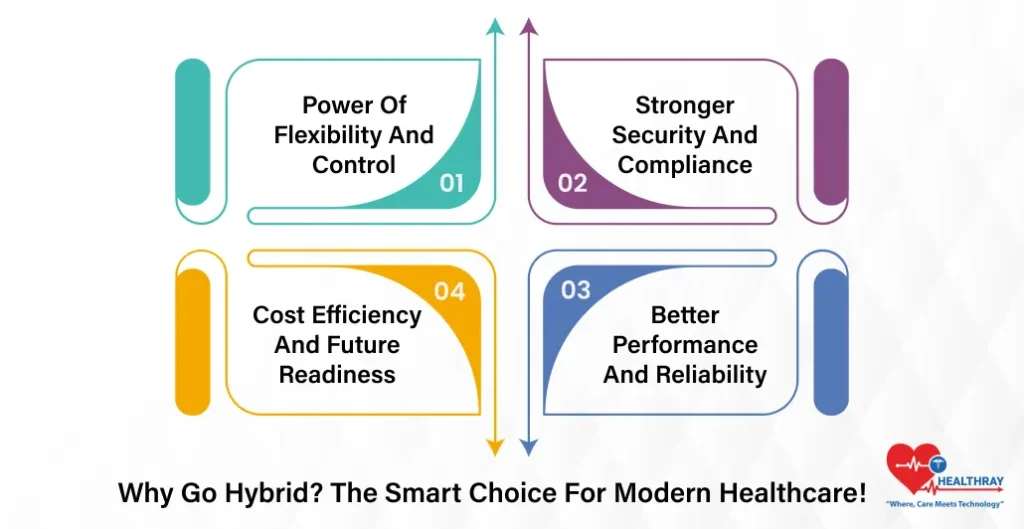
Technology should never stand still, because healthcare never does. The hybrid model keeps that promise of seamless progress alive.
Power of Flexibility and Control
No hospital wants to cede control; they all want flexibility. With Hybrid EMR Deployment Models, that dream finally becomes a reality. Hospitals can now choose which data stays on local servers and which moves to the cloud. Sensitive patient files are kept safely on-site, and the rest of the business operates online. This perfect split creates balance, not boundaries.
The current EMR software is geared towards this. It allows you to access data from anywhere, preventing access rights from being static. Doctors use tablets in the wards, and administrators update them from afar. Everything syncs automatically. No one waits for IT approvals, for backups to catch up.
On top of that, a hybrid model gives hospitals more flexibility to expand rapidly. Adding more users or branches no longer means buying huge servers. The cloud expands when needed, and costs are predictable.
Stronger Security and Compliance
Data security continues to be an issue of great concern for healthcare leaders. Hospitals have daily interactions with the identities, treatments, and intimacies of their patients. A single leak can destroy reputations and trust. That is where hybrid systems really work, protecting sensitive data while not blocking progress.
EMR medical solutions in a hybrid model involve keeping private information locally. This puts encryption and the ability to access them directly in the hands of the hospitals. The cloud side, meanwhile, handles backups, collaboration and analytics.
The EMR audit trail & compliance tools are a nice touch as well. Such tools record each login, modification or access attempt as it occurs. Activity is easily tracked by administrators, and risks are fixed in a faster manner. There is nothing hidden in the system.
Moreover, hybrid systems also help FHIR-based EMR integration and interoperability to share data securely. These reports can be shared with laboratories or specialists, but are still under the patient’s control. There is smooth and encrypted communication between various healthcare applications via the FHIR standards. So, while care expands across departments, security never breaks its promise.
Better Performance and Reliability
In healthcare, every second counts. Delays cost time and trust. This is the sweet spot for hybrid EMR deployment models. On-premise servers take over instantaneously when cloud connections slow down. When local systems go down for maintenance, the cloud keeps things running. Its impact? No downtime; continuous care.
This model also has better performance in terms of speed using EMR software. Critical data is processed on local servers, and doctors have immediate access to the reports. Meanwhile, large files or archives are moved to the cloud for later access. This load balancing reduces lag and increases performance.
In addition, EMR medical solutions that were developed to work in hybrid contexts employ automatic data synchronization. Changes propagate through the systems in seconds. So, even if you lose internet connection, the system updates itself when you regain the connection.
It also enhances disaster recovery. What if there’s a power outage or server crash? The cloud backs up all of it. IT teams can restore data calmly. That reliability makes hybrid deployment critical, not a luxury.
Cost Efficiency and Future Readiness
Hospitals are always juggling budgets. The costs of upgrades to infrastructure, licensing and storage add up quickly. However, hybrid deployment ends that cycle. It reduces capital expenditure while leaving important infrastructure in place. The cloud handles scaling, backups and upgrades.
Because the EMR system is partially cloud-based, IT teams can spend hours on maintenance. They no longer need to take their systems offline for every update. Cloud upgrades are handled automatically by vendors, and the local systems become stable. All savings are reinvested in patient care.
Hybrid EMR deployment models also put hospitals one step ahead of the next wave of technology. As artificial intelligence and big data revolutionise healthcare, EMR medical solutions must take in and handle large datasets while maintaining security within them. The hybrid setup takes this in stride. The cloud does the computing, and on-premise servers hold proprietary knowledge.
It also lends itself to predictive health care – assessing risk before issues arise. Hybrid hospitals are at the forefront of making this change. They run advanced workloads without new infrastructure hassles.
On-Premise vs. Cloud vs. Hybrid EMR: The Showdown
| Feature | On-Premise | Cloud | Hybrid |
| Data Control | High | Moderate | High |
| Cost | High upfront | Pay-as-you-go | Balanced |
| Flexibility | Low | High | High |
| Security | Internal | Shared | Mixed Shield |
Final Thoughts: Balance Is the New Power
Hybrid EMR Deployment Models show that healthcare has the option of having both control and convenience. Smart EMR software allows hospitals to maintain on-site protection of data while still utilizing the benefits of the cloud.
In addition, an embedded EMR audit trail & compliance tools make all actions clear and safe. And with FHIR-based EMR integration and other advanced EMR medical solutions, data flows seamlessly between them.
Hybrid also means preparation for any challenges or opportunities that may lie ahead. It combines safety and speed at scale in one robust package. And in healthcare, balance isn’t compromise, it’s progress.


